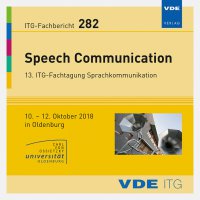Optical force and distance sensing in intraoral devices for stroke rehabilitation: a distance calibration and force classification approach
Conference: Speech Communication - 13. ITG-Fachtagung Sprachkommunikation
10/10/2018 - 10/12/2018 at Oldenburg, Deutschland
Proceedings: Speech Communication
Pages: 5Language: englishTyp: PDF
Personal VDE Members are entitled to a 10% discount on this title
Authors:
Wagner, Christoph; Stone, Simon; Birkholz, Peter (Institute of Acoustics and Speech Communication, Technische Universität Dresden, Germany)
Abstract:
Stroke survivors often suffer from oro-facial impairments, affecting swallowing function and speech production. Measuring tongue pressure and position intraorally can help to improve therapy for both symptoms, but space inside the oral cavity is extremely limited and such devices can easily be prohibitively large and obstructive if too many sensors are needed. In this work, we present our efforts to sense the force of the tongue exerted against the hard palate and the tongue-palate distance, using only optical proximity sensors. To explore the feasibility and accuracy of this approach and to evaluate the selected sensor, we conducted a study with 10 subjects and measured the sensor’s response to 10 discrete distances ranging from 0mm to 30mmbetween tongue and sensor, and to a continuously increasing tongue force against the sensor from 0.1N to 8N. For distance measurements, an existing in-situ calibration method was applied and verified that yielded errors of less than 2mm for the estimated distances in nearly every case. For force measurements, a Bayesian classification approach was adopted to map sensor data to two force regions (below and above a certain boundary value), where up to 84.1% (average: 71.7 %) of ADC values were classified correctly within-sample.


